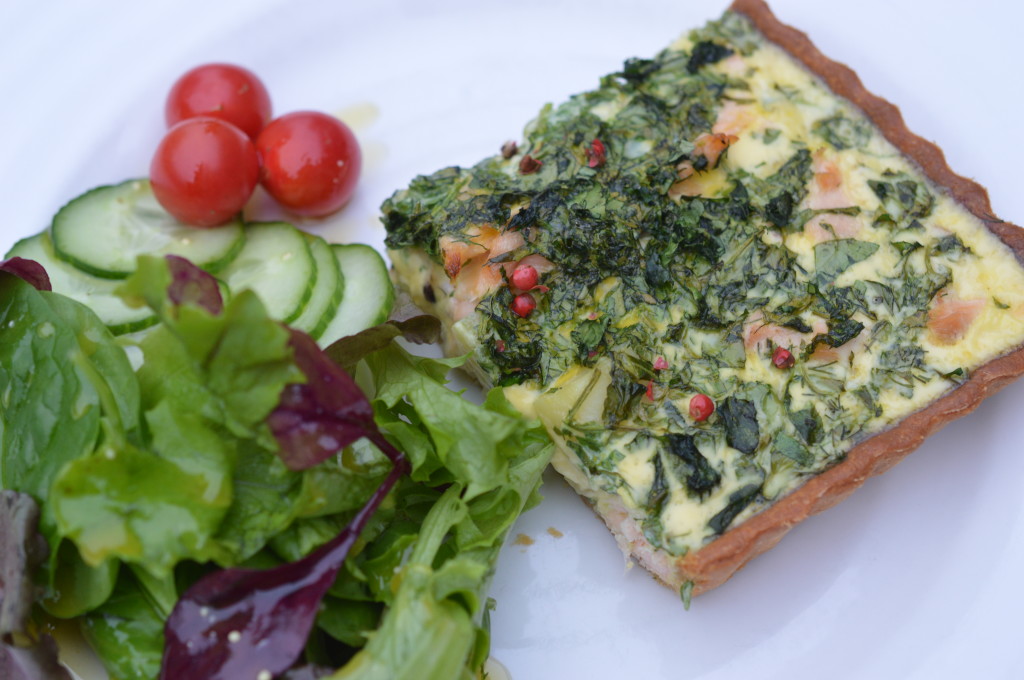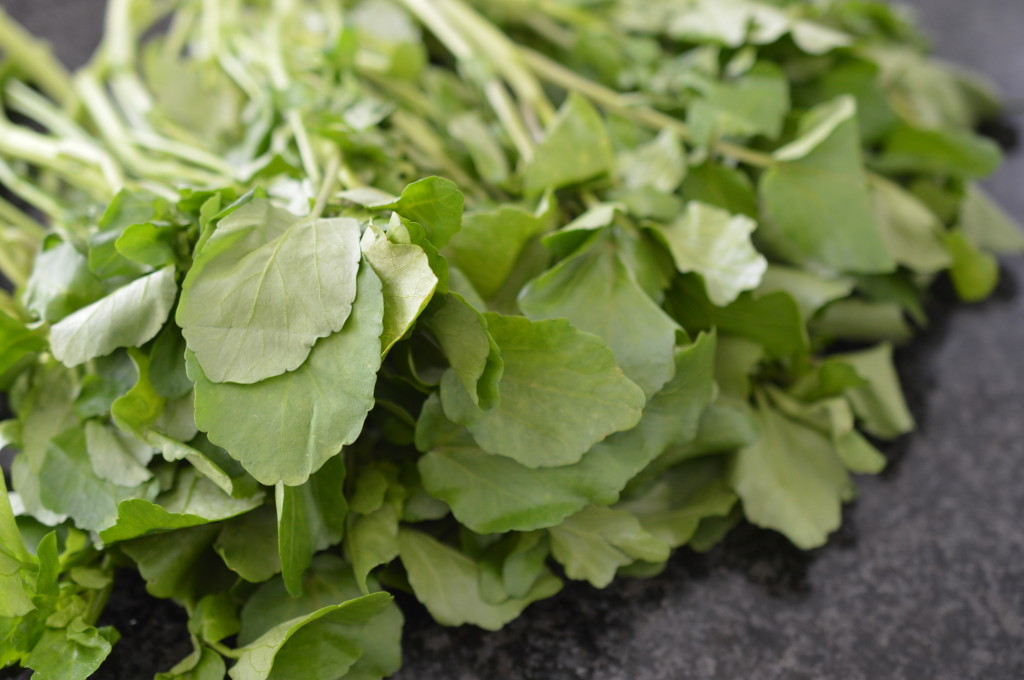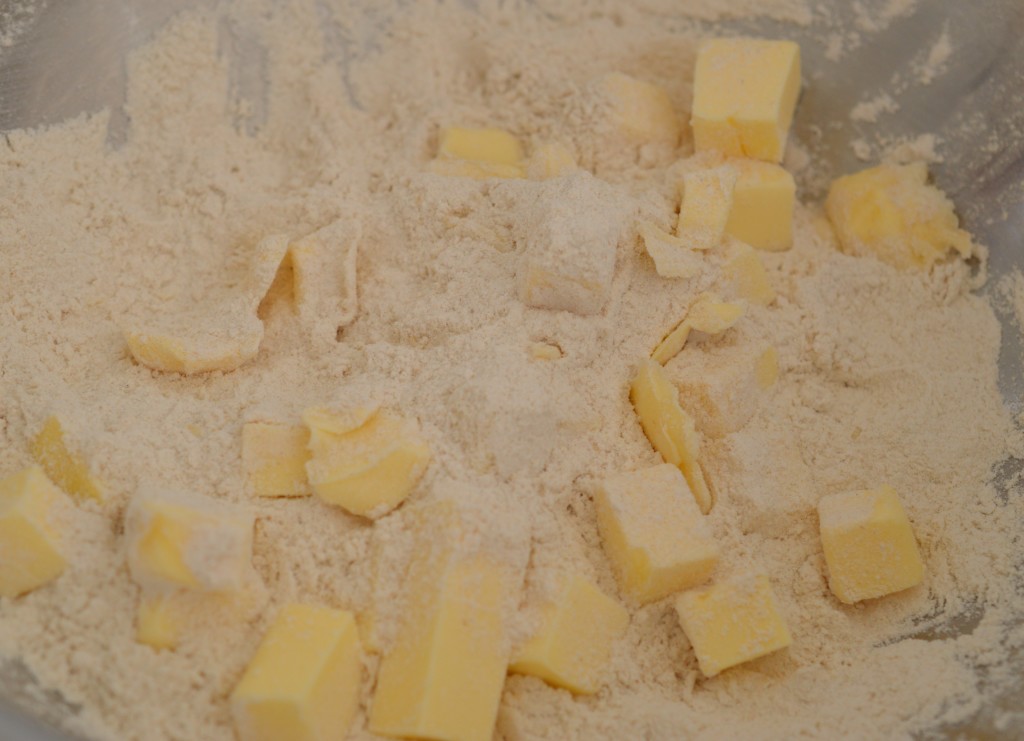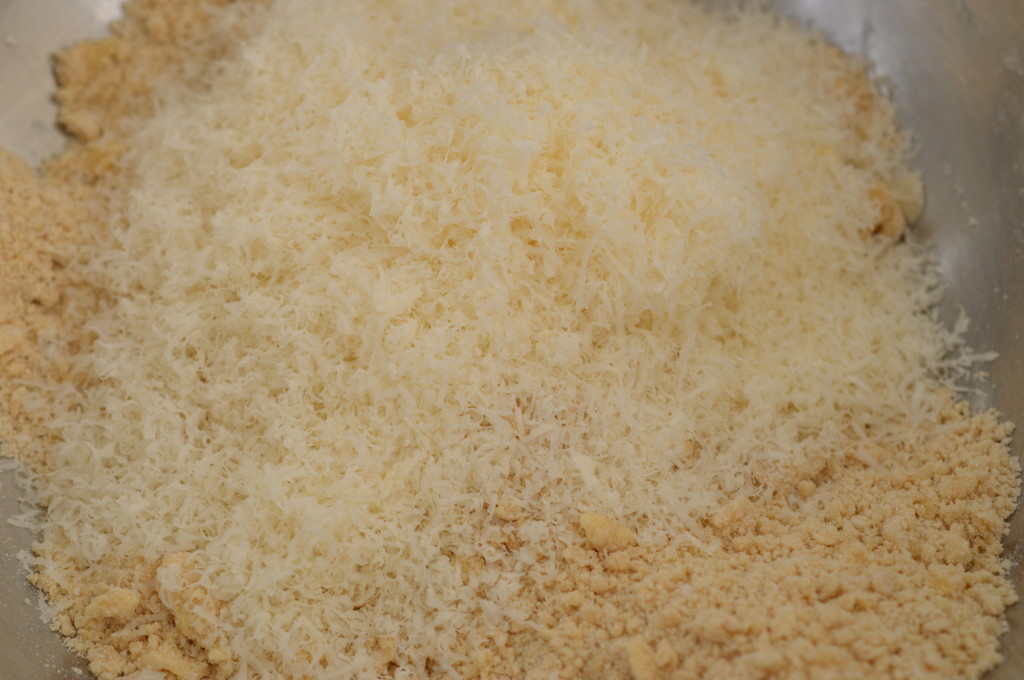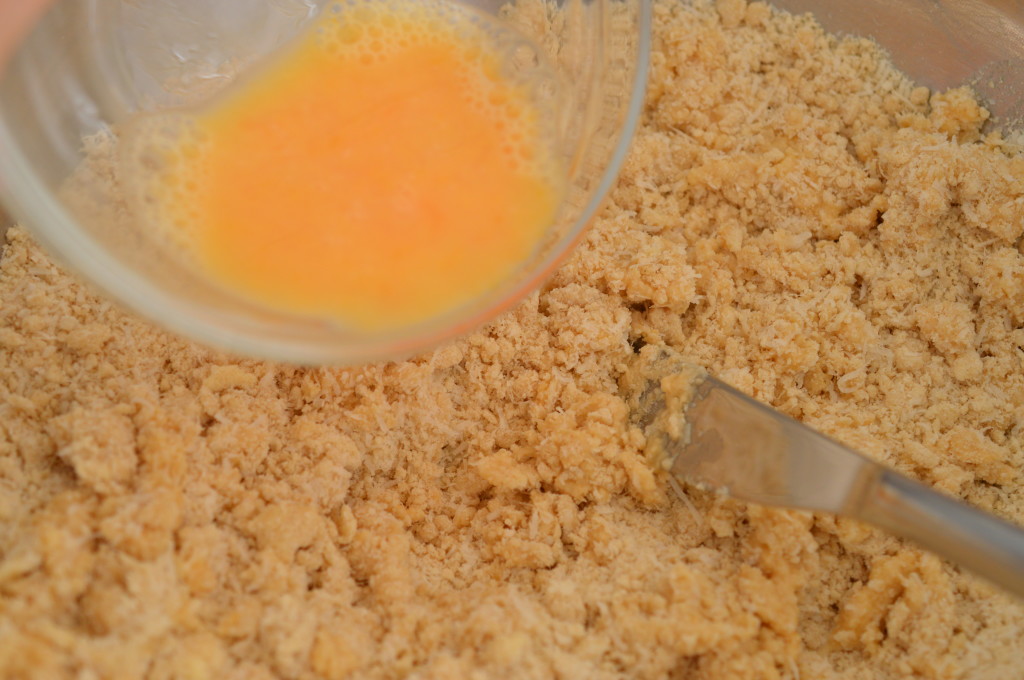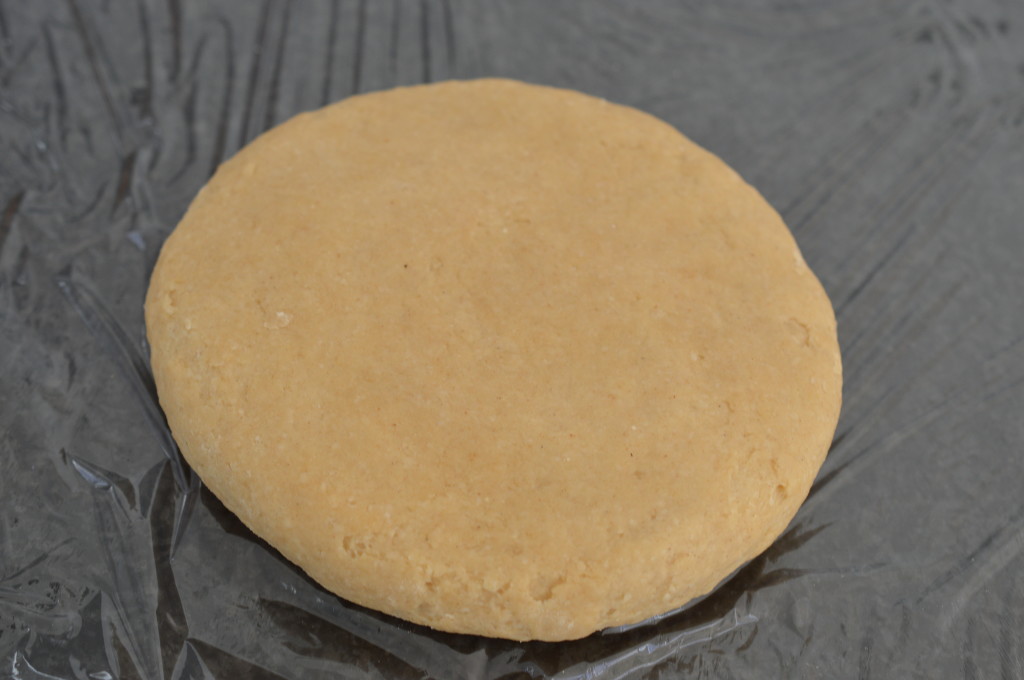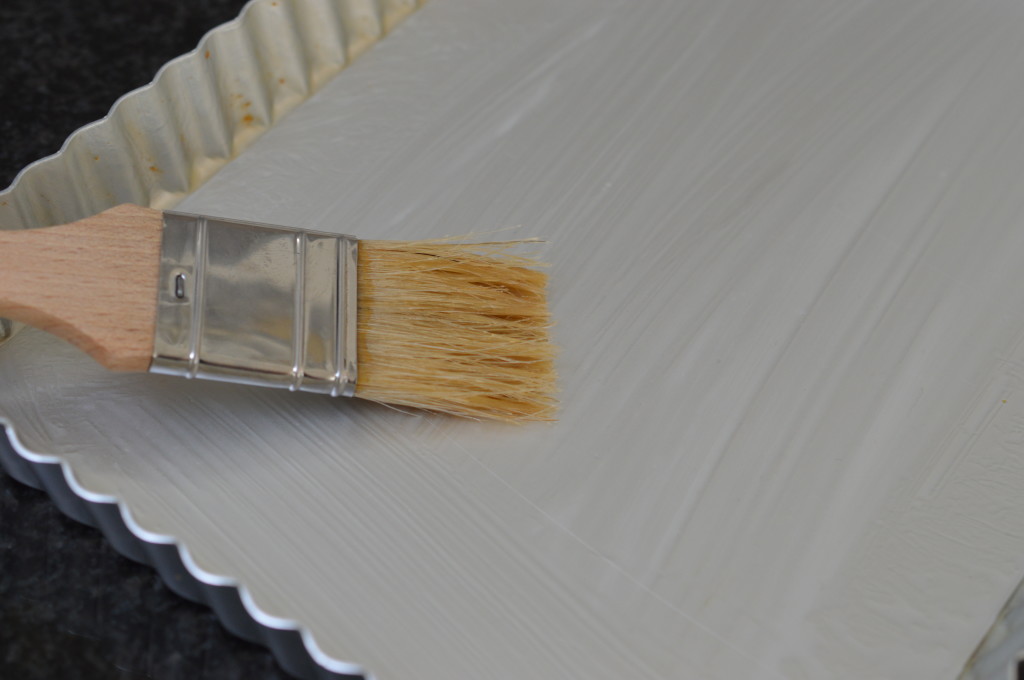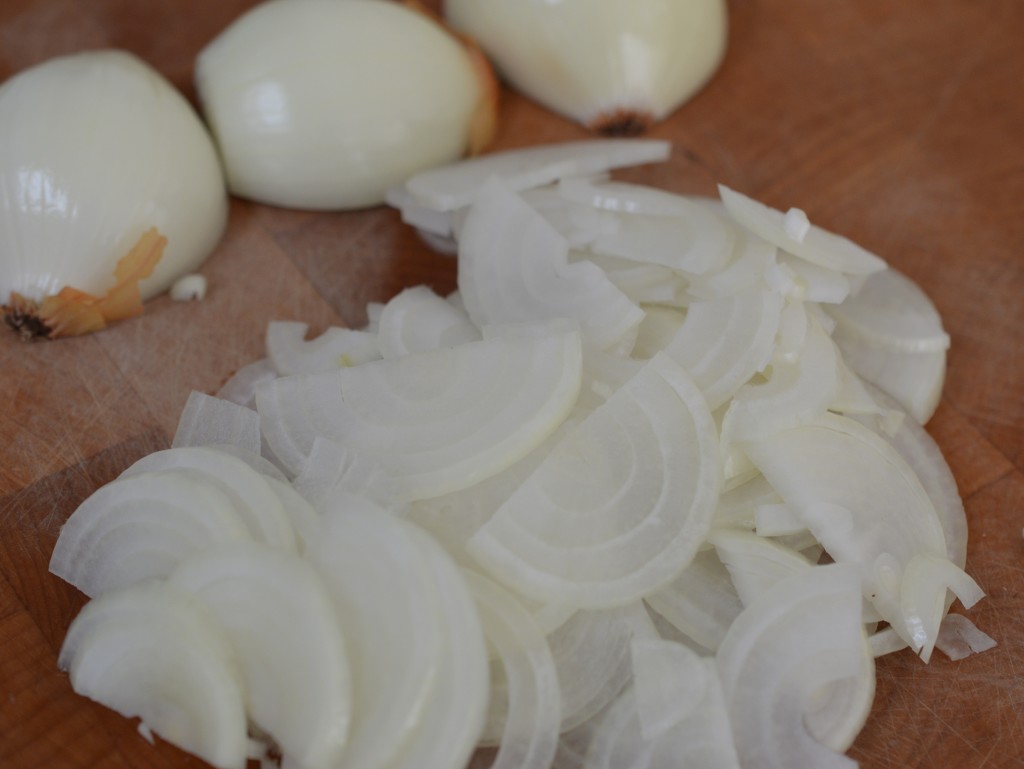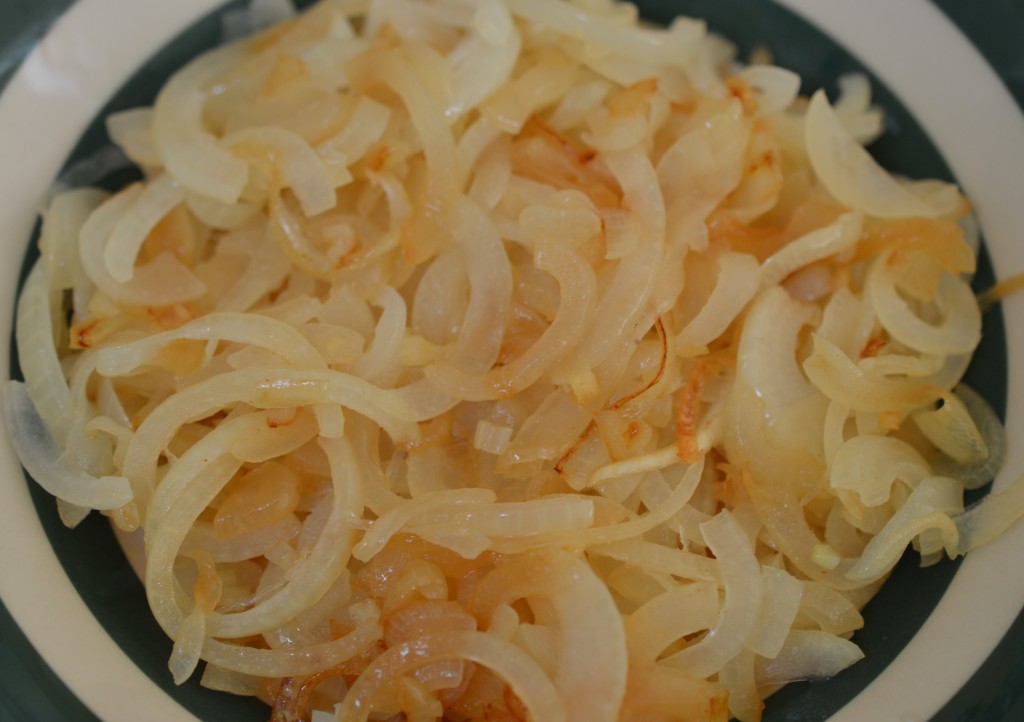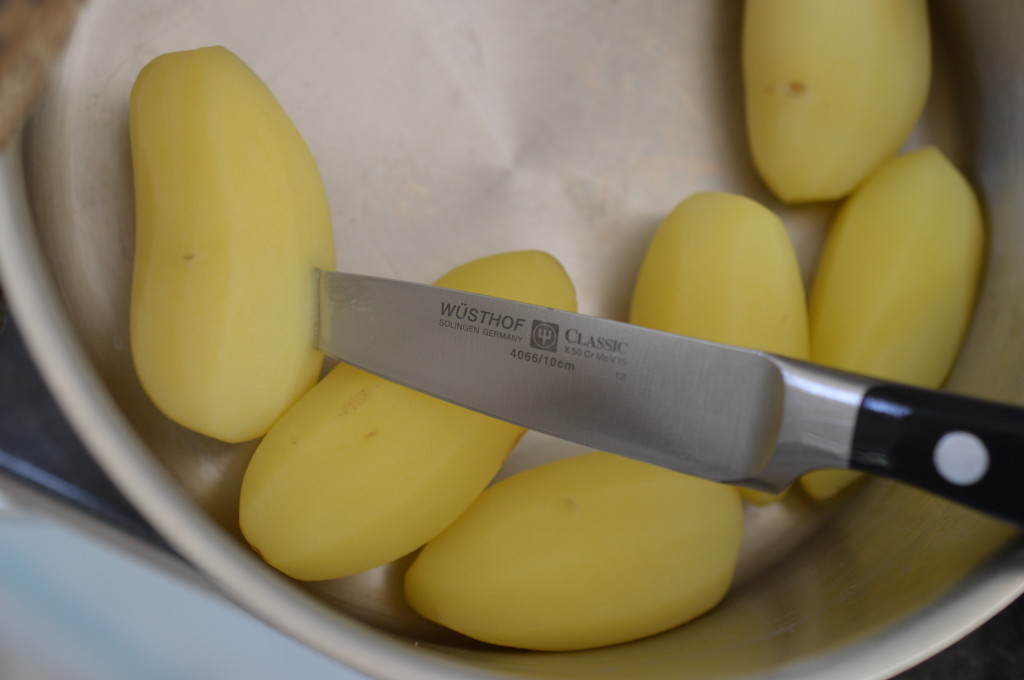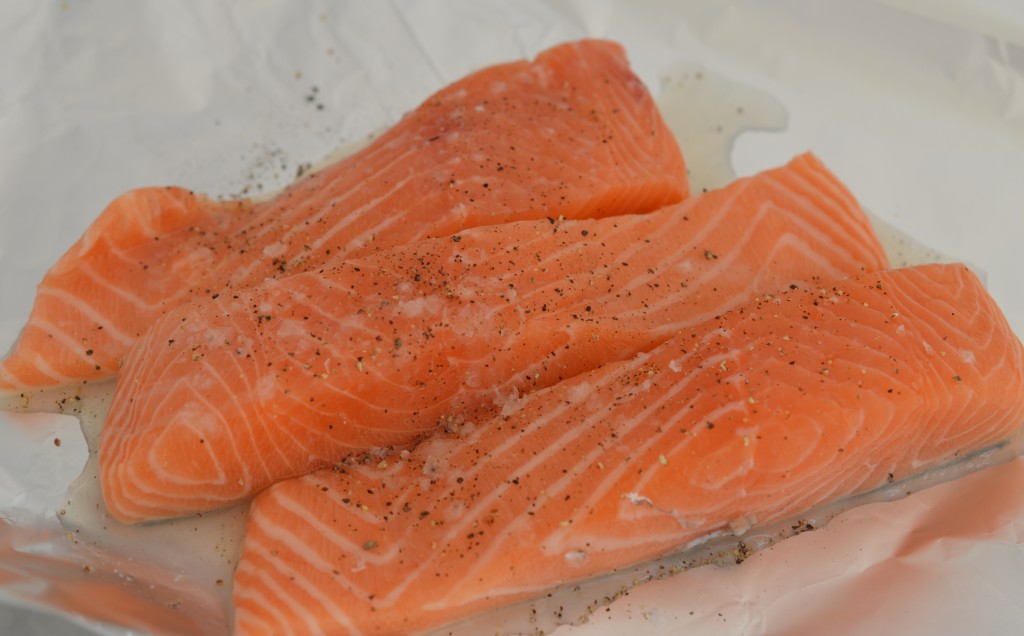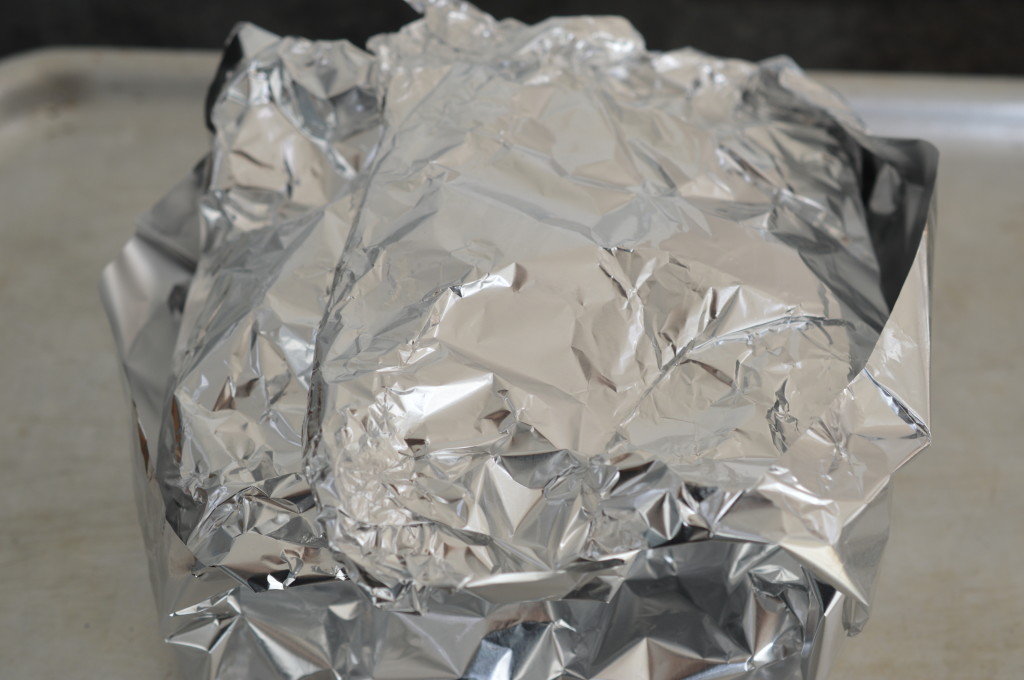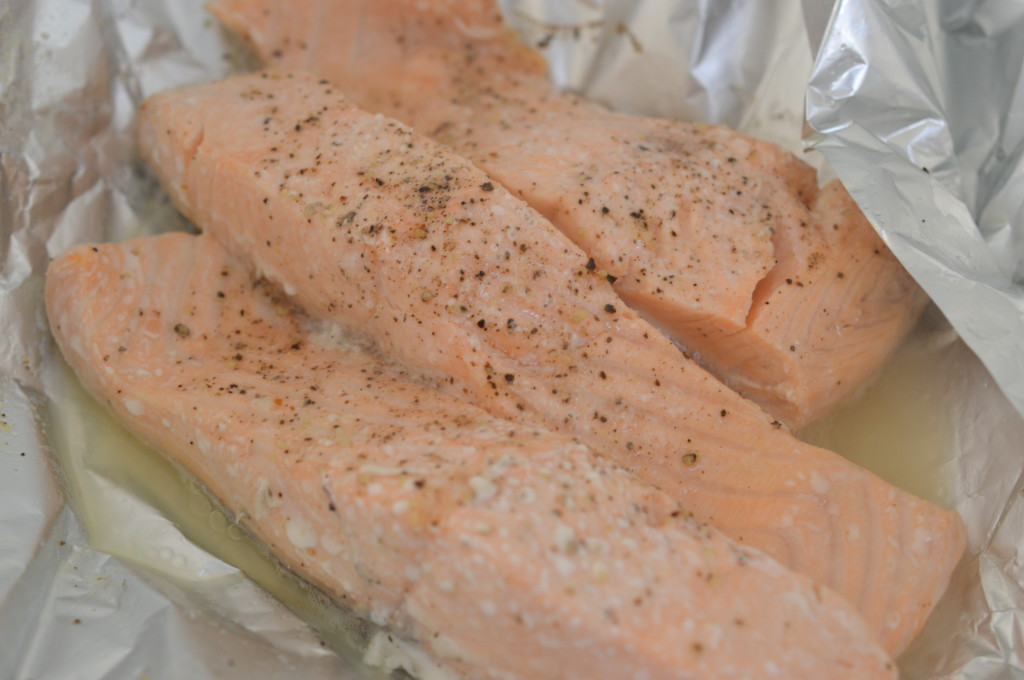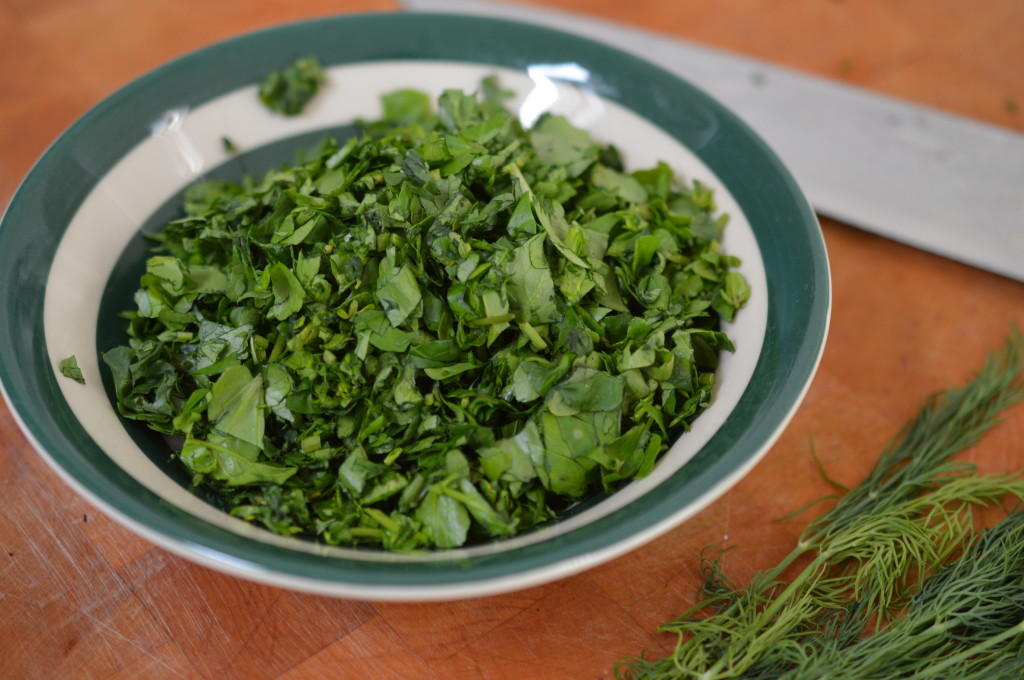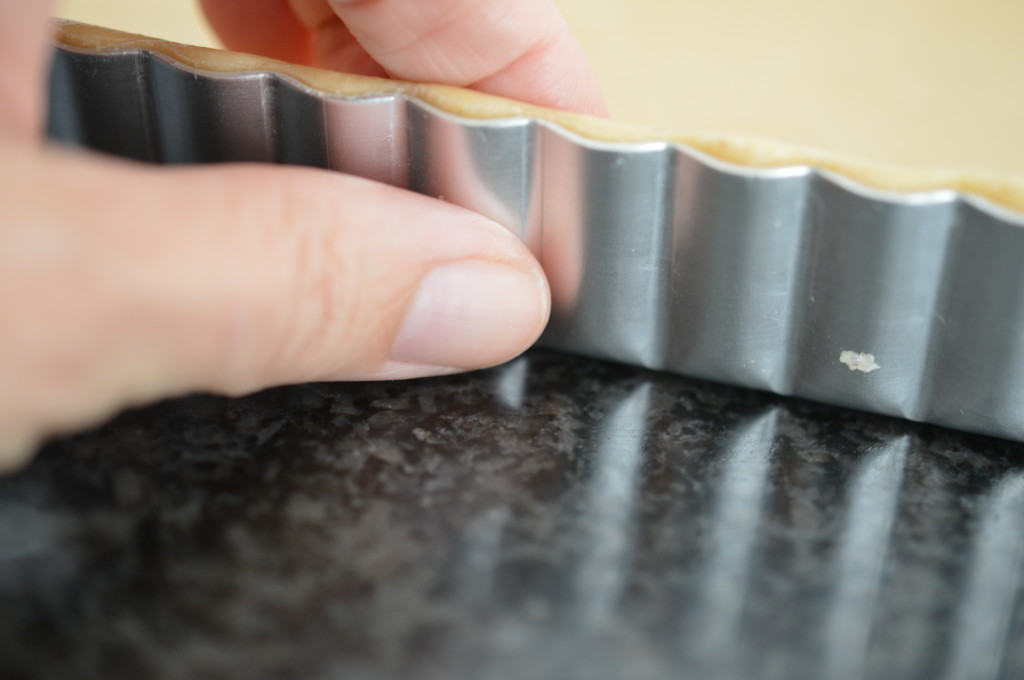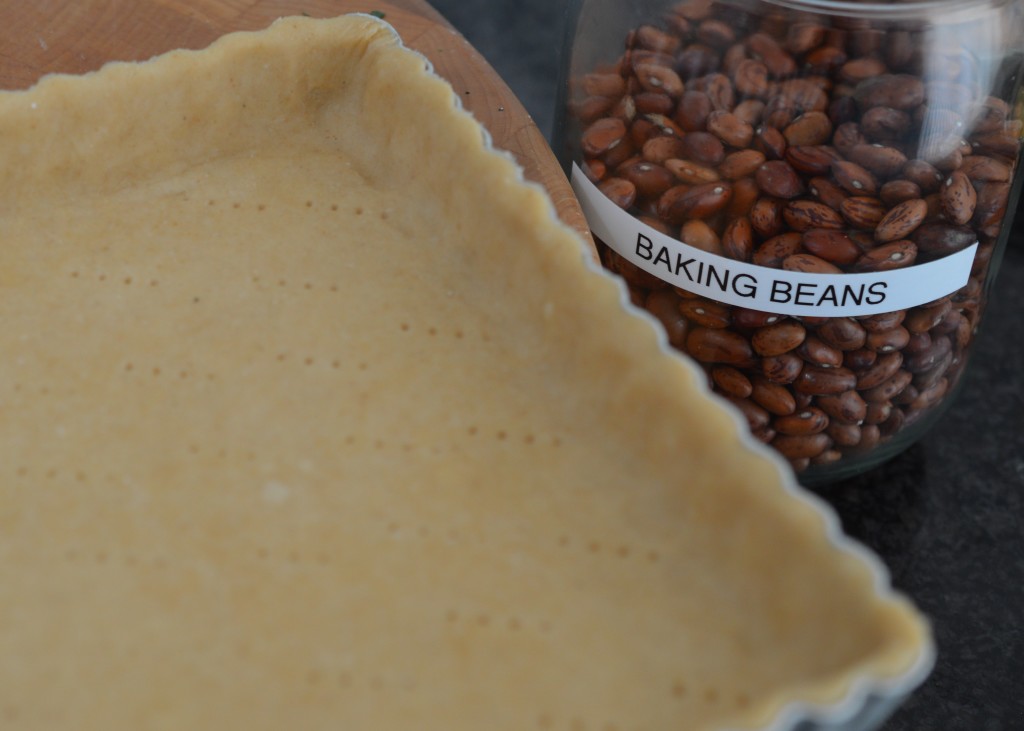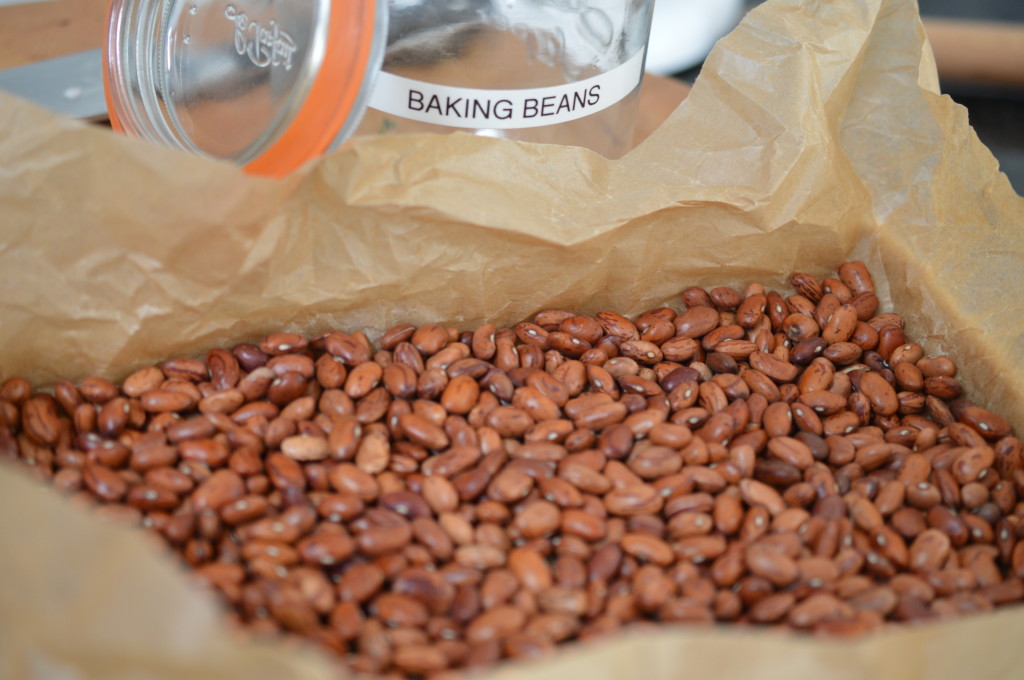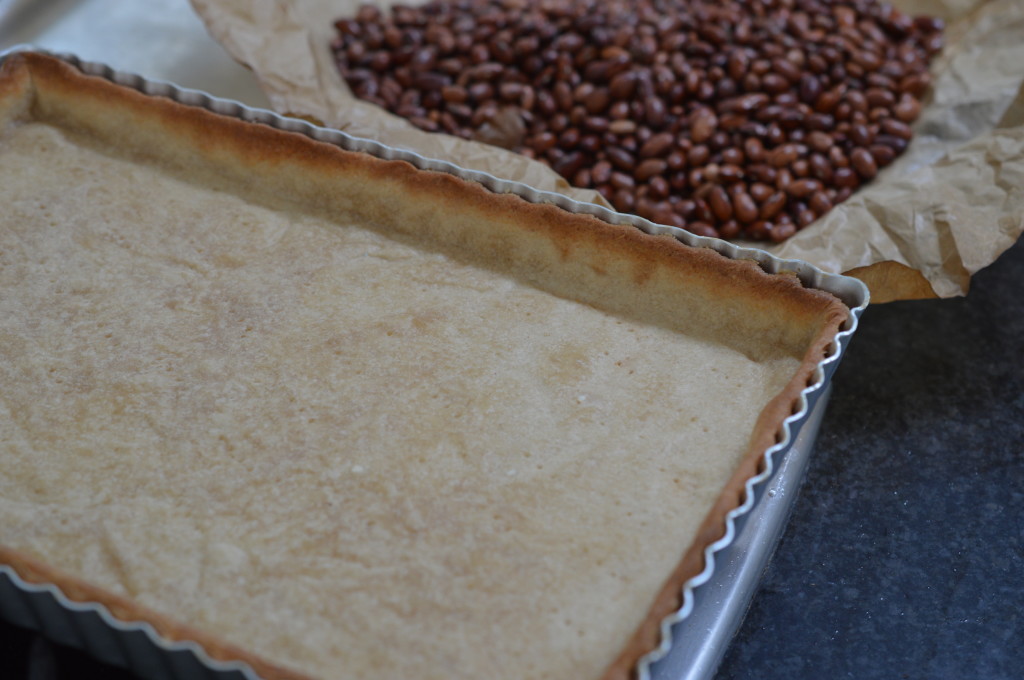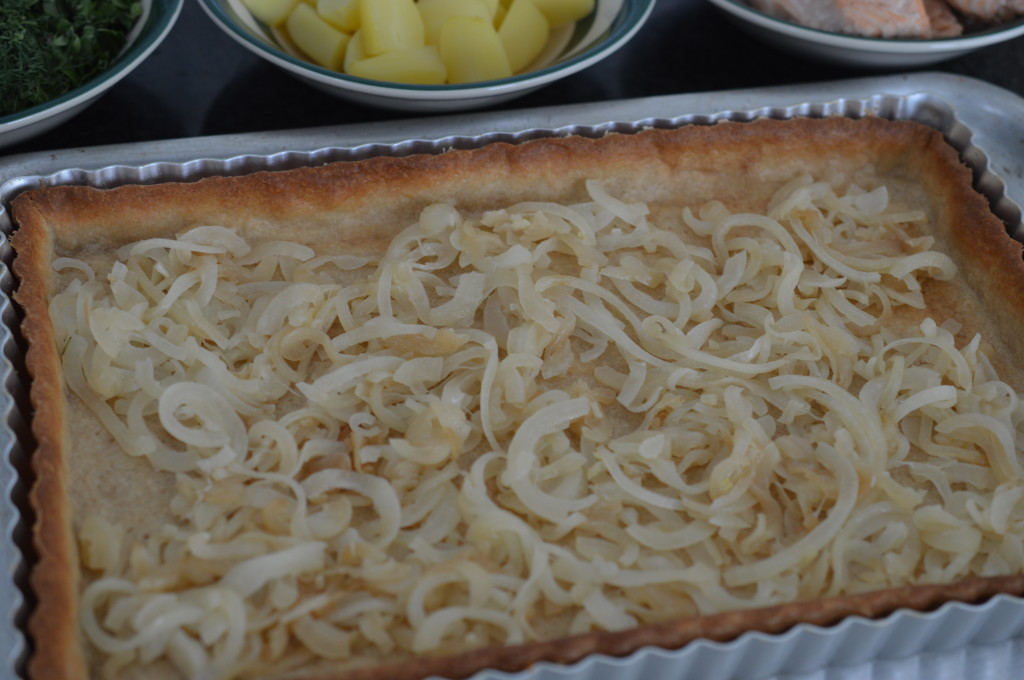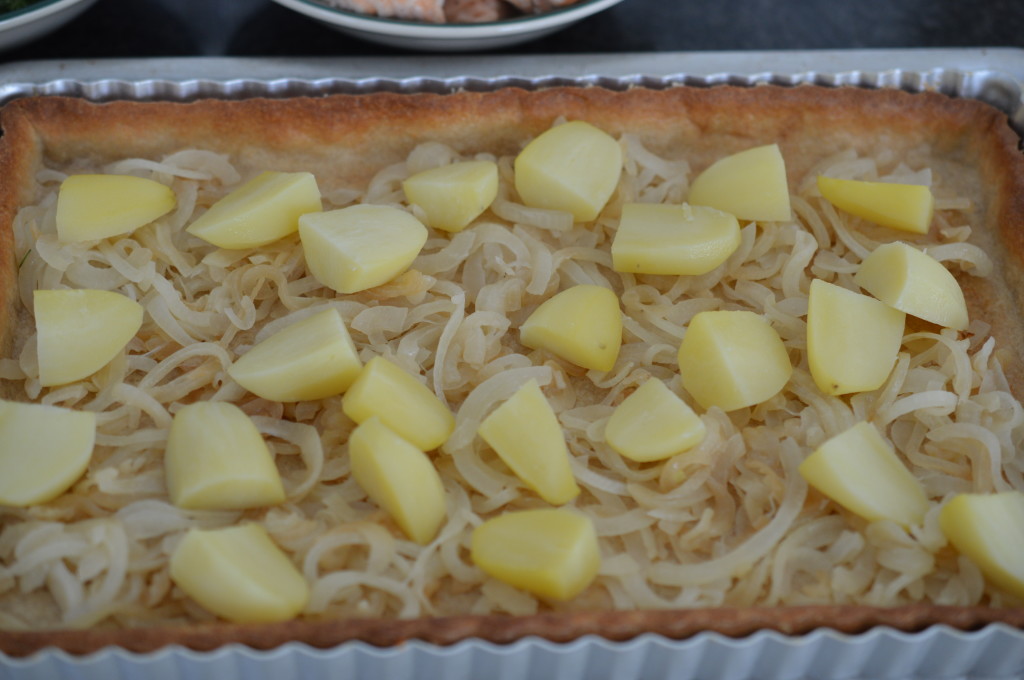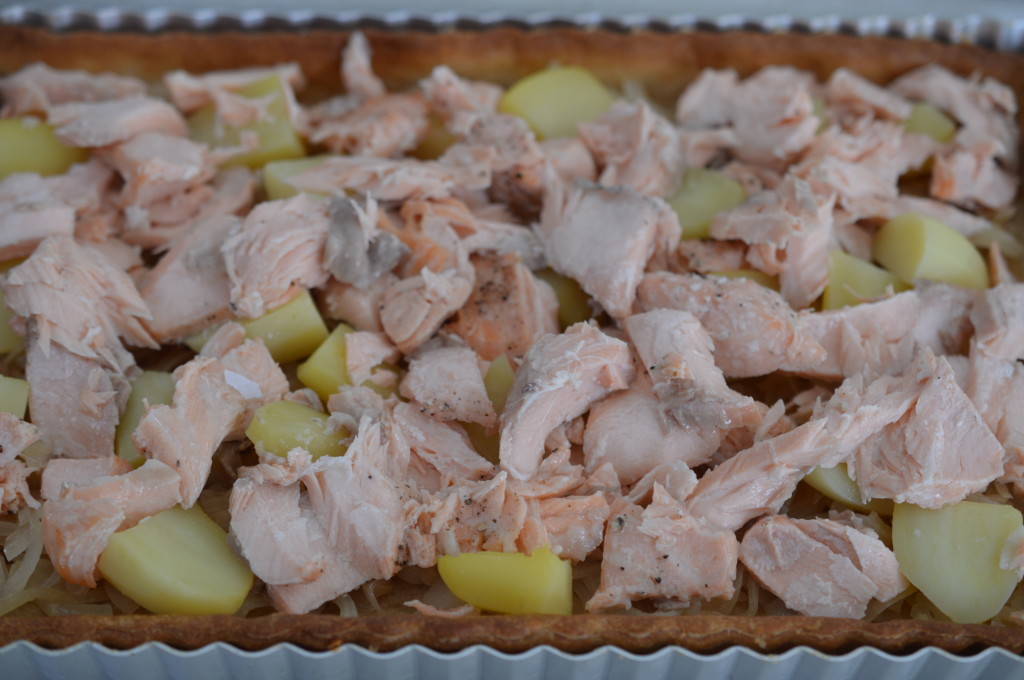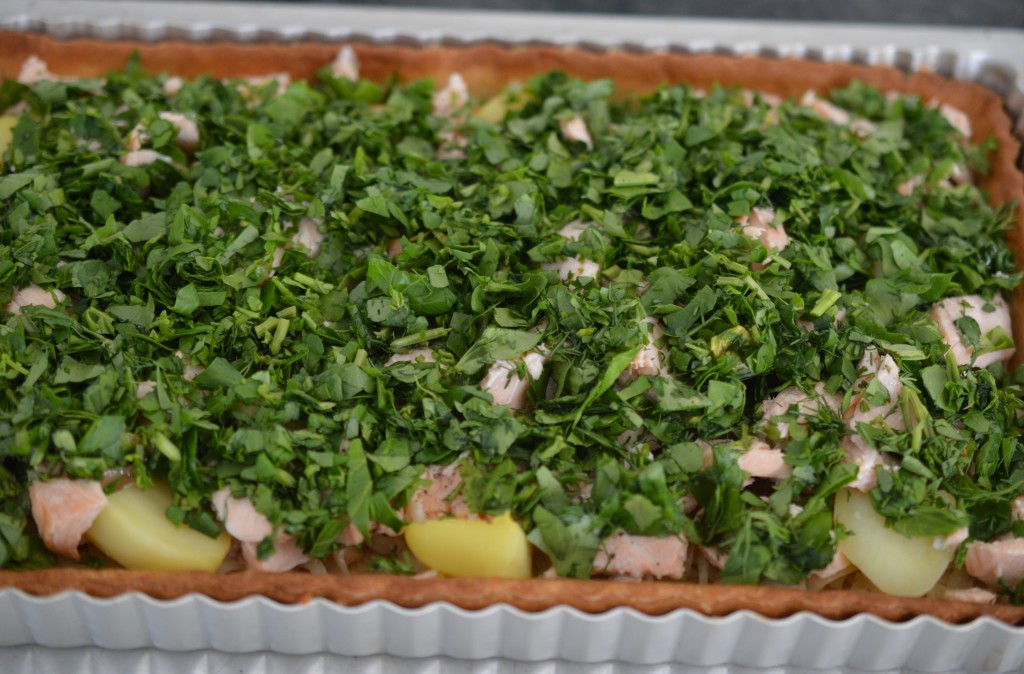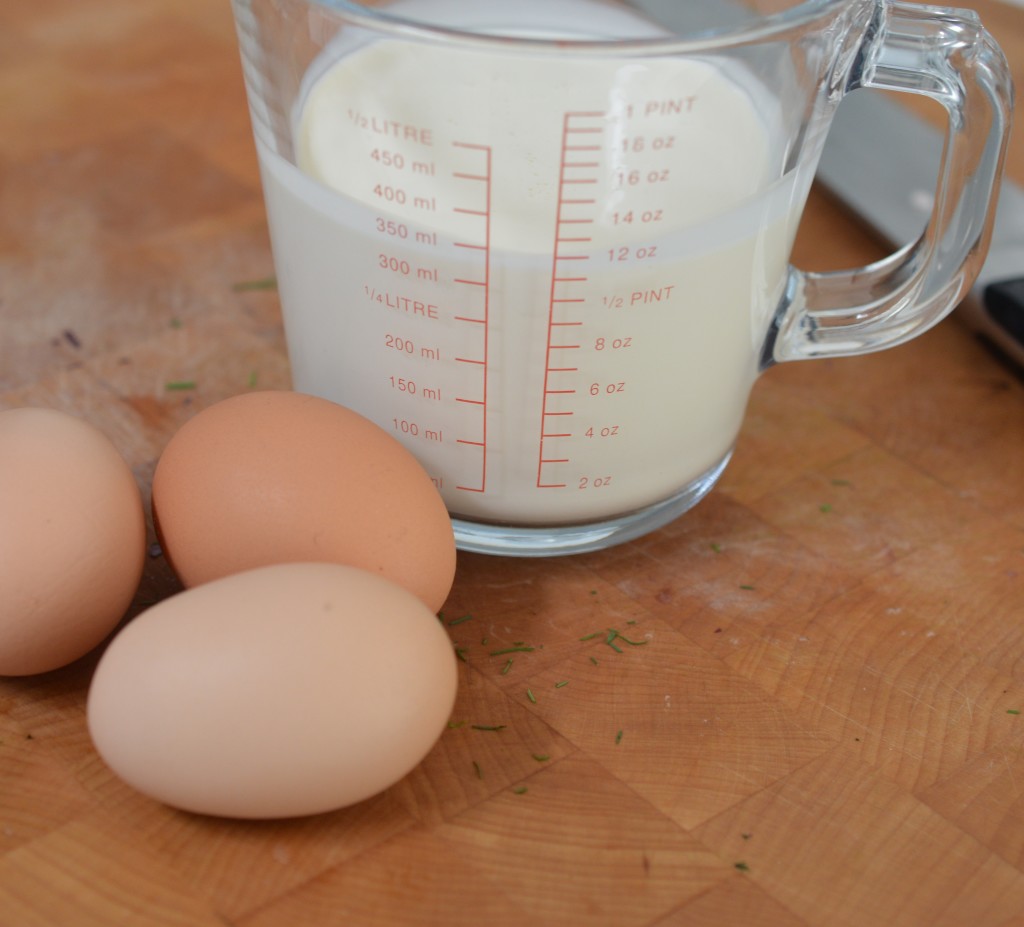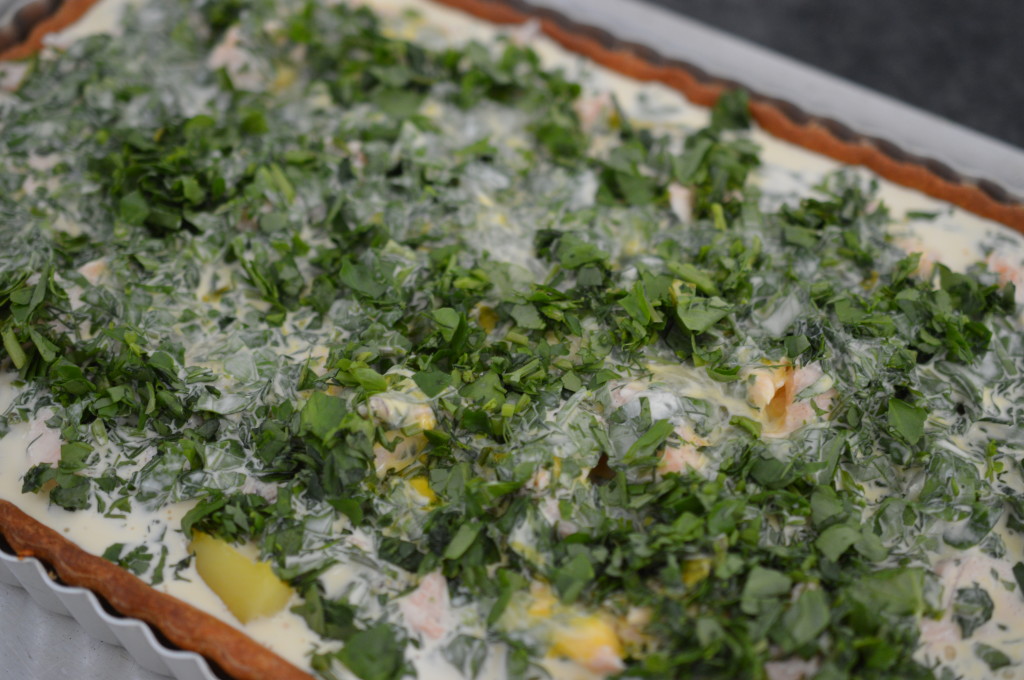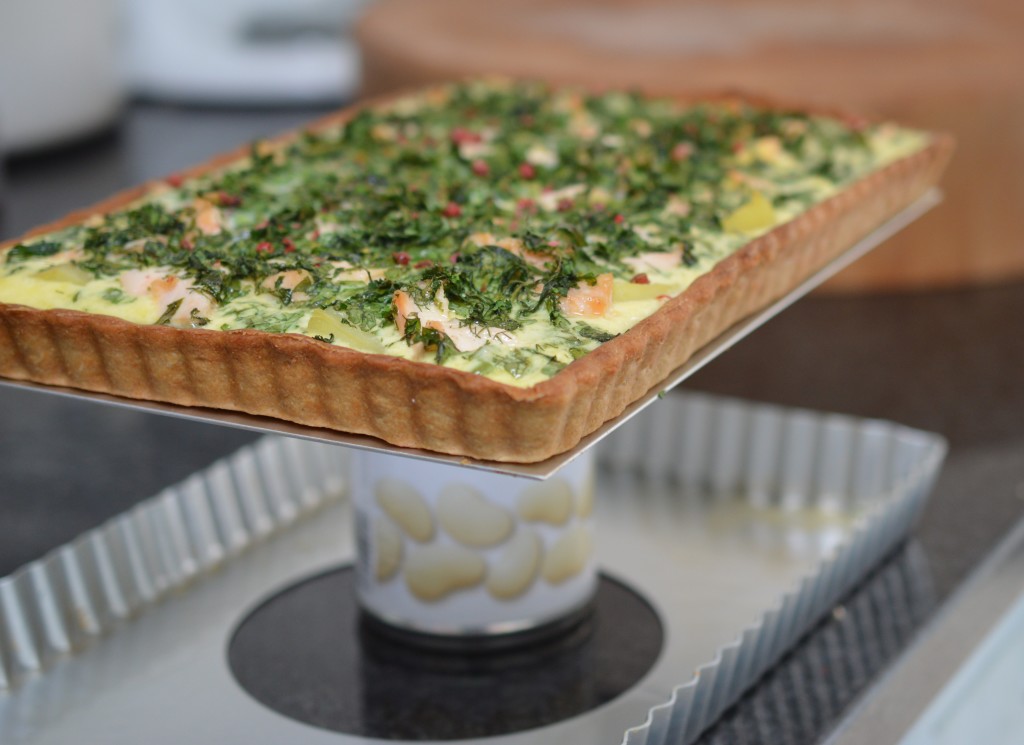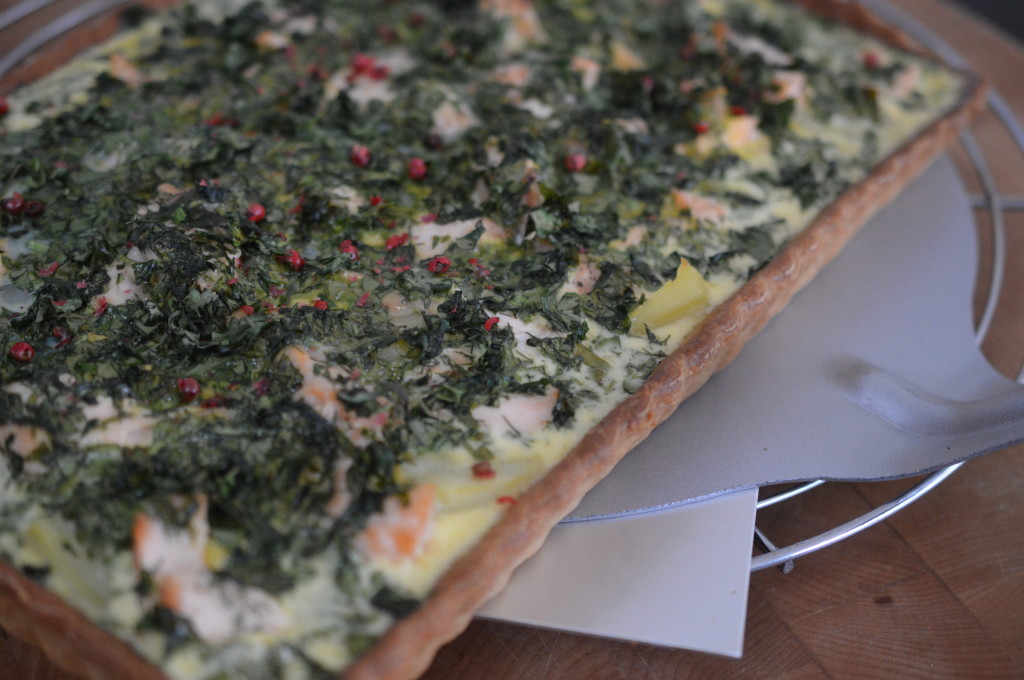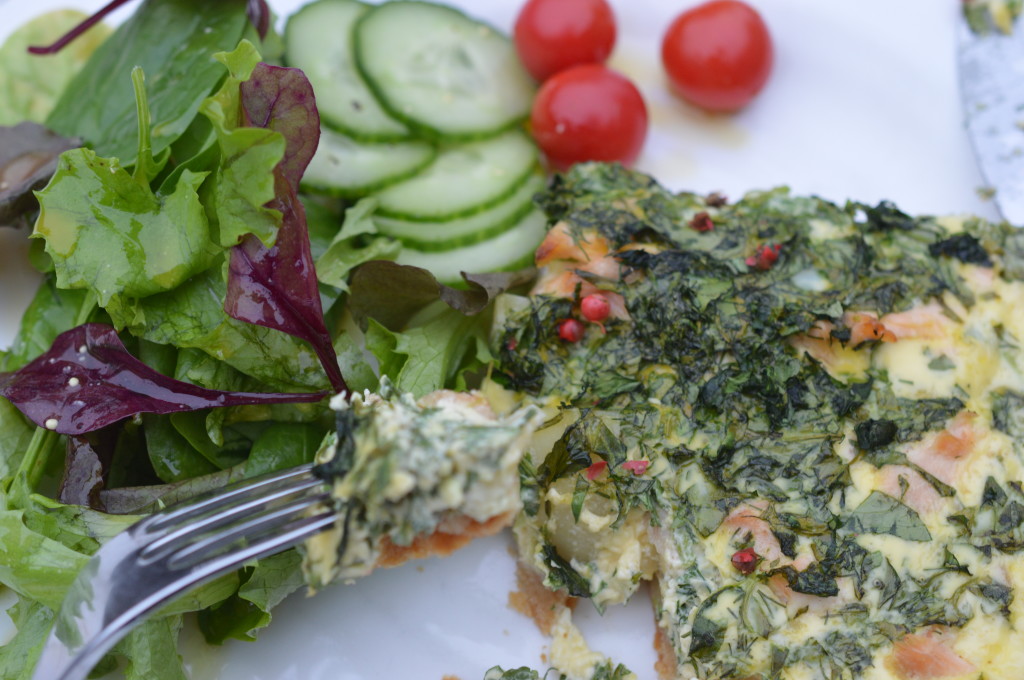Salmon and Watercress Quiche with Pink Peppercorns
Salmon, watercress and new potatoes brought together in perfect harmony. I love this quiche.
I admit I’m wistfully clinging to memories of fine weather here – because I do think this is a perfect lunch for a bright Spring day when the sky is cornflower blue, the clouds a collection of fluffy cotton wool balls and I’ve yet to suffer the disappointment that, yet again, I have failed to water my hanging baskets effectively.
In actuality, it’s been a wet week and if there’s much more rainfall I’ll have to bring out my high heeled, wedged wellington boots. (Yes, I know what you’re thinking – urban creature to the core.)
The English watercress season is coming to an end (it peaks in the Spring and then again in the Autumn) and it seemed wrong to ignore the bunches at the market this week. Besides which, it’s a wonder food. It’s rich in vitamins A and C, iron, calcium, magnesium and folic acid. So that goes some way to balancing out the double cream …, doesn’t it? Besides which, Sir Francis Bacon (1561-1626) who was generally thought of as a man of great ability claimed it could restore a youthful bloom to women. Which settles it. A ‘must buy’ ingredient.
This recipe I found in a lovely book called ‘The Higgidy Cookbook’ by Camilla Stephens. I’m an inveterate ‘tinkerer’ with recipes, but this I’ve left alone. I think it’s beautifully balanced and, bar halving the amount of dill because Jem prefers it that way, it is as it ever was.
Begin with the pastry. Even though this pastry is slightly ‘richer’ than the one I used in my Lemon Meringue Pie, the cardinal rules remain the same. The first being, don’t over-handle it. The second, don’t skip the chilling.
Sift your flour and salt into a large bowl. Then add the fat, cut into smallish cubes. Here I’m using all butter. It shouldn’t be soft, which would make your pastry difficult to work with, but it needn’t be fridge hard either. There’s a ‘sweet’ point between minimal handling and keeping everything cool. (If you don’t mind washing up, which I do, a food processor is a perfectly acceptable option. Flour, butter and cheese in the processor and pulse until the mixture resembles ‘breadcrumbs’ before adding the egg/water liquid. Bring together to form a dough, and wrap in cling film to chill.)
For my boys, here’s the science – what you’re actually doing by ‘rubbing in’ is coating tiny bits of flour with fat – before you add any liquid. It’s a raincoat! The idea is to stop liquid penetrating the flour. Liquid + flour = gluten proteins. And gluten proteins give you tough pastry which you’d prefer not to eat.
Clean hands, not cold. (There’s no need to run your hands under a freezing tap or concern yourself as to whether you’re a cold heart, warm hands kind of person. Anyone can make pastry.) Butter cut into smallish cubes, at a squeezable temperature.
Stop when it resembles breadcrumbs – ish. There will still be little lumps of fat, but that doesn’t matter. You’ll get far better results if you don’t ‘over-work’ it.
Now add the finely grated parmesan cheese and combine with a blunt knife. Besides adding a savoury note to your pastry, this cheese will give it a lovely colour when it’s baked.
An egg yolk to bind and add richness. Loosen the egg yolk with 3 tablespoons of cold water and add gradually. Using your knife, bring it together.
Gather it together into a ball. Dough gathers dough so use it to collect any stray bits until the sides of the bowl are clean. Lightly knead on your worktop. The intention is to have a smooth dough which is completely free of any cracks.
-If you’ve made a mistake with the egg yolk/water mix and the pastry is crumbling beneath your fingers – run your hands under the cold tap and lightly knead in the water on your hands.
-If it’s too wet you’ll have to sprinkle flour on your worktop. Go careful because you are altering the fat/flour ratio.
Form it into a flat disc and wrap in plastic cling. The flat is important. If you chill it as a ball the outside will come back to room temperature much quicker than the centre and you’ll struggle to roll it later. Put it in the fridge. Chill for a minimum of 30 minutes.
Longer is absolutely fine …
I melt butter. My mum, you may remember, used old butter wrappers. Either way, make a good job of this. It’s so annoying if you can’t get a quiche out of the tin! I’m using a loose-bottomed fluted rectangular tart tin, 30cm x 20cm (Silverwood).
While the pastry is resting, it’s time to get the filling ready. Since you want it cool before you add it to your pastry case it makes sense to crack on.
Pre-heat the oven to 200ºC/Gas Mark 6
Finely slice an onion. Mine were particularly small, so I used three. Common sense here. I like onion, but it’s your tart.
Melt a knob of butter in a frying pan and, over a low heat, soften for about 10 minutes. (Aga: Melt the butter on the Boiling Plate, add the onion, stir and pop into your simmering oven for 20 minutes or so.)
Small, waxy, peeled salad potatoes – cooked until just tender to a knife point. Then cut into 1.5cm/1″ chunks. (Aga: Bring to the boil in salted water, drain completely and place in the simmering oven.)
Place your salmon fillets on a large sheet of foil and add lemon juice, salt and pepper.
Wrap, taking care to fold the edges over all the juices are kept inside and the fish can steam. (Aga: bottom runners of Roasting Oven.)
12 minutes later, it’s ready and looks like this.
Prepare the watercress by picking off the leaves and discarding the stalks. Chop finely. Add finely chopped dill, to taste.
By now your pastry will have chilled sufficiently and you can line the tin. I roll my pastry between two sheets of cling film, but if you prefer you can roll on a lightly floured surface and flip your pastry over a rolling pin to transfer to the prepared tin or slide the base of the tin under the rolled out pastry, lightly flip the edges inwards and lift into the tin before flipping the edges back. You are aiming for a 3mm/an eighth of an inch. (Why isn’t there a little symbol for that???)
Pass the rolling pin across the top of the flan tin to trim the excess pastry. Push into the sides and I always bring it slightly above the top rim as an insurance against any shrinkage.
Prick the base with a fork and return it all to the fridge for that all-important chilling.
(This is the obvious time for a cup of tea.)
When the chilling time is up, take the pastry lined flan tin from the fridge and bake ‘blind’. (Line the pastry case with baking parchment and pour in your baking beans. Use a generous amount as they provide support to the sides and weigh down the base so it doesn’t puff up.) Bake for 20 minutes. (Aga: There is no need to blind bake.)
Then lift out the baking parchment and beans and return the pastry case to the oven for a further 5 minutes. You want the pastry to be ‘dry’ before adding the quiche filling. (If you find you have any cracks you can use some of the off cut raw pastry to patch them up. Brush the repair job bits with beaten egg before returning to the oven for those last 5 minutes.)
Leave the pastry to cool and reduce your oven temperature to 180ºC/Gas Mark 4.
Lay the cooked and cooled onions across the base.
Then the par-boiled potatoes.
Flake the salmon and arrange on top of the potatoes.
Scatter over most of the watercress and dill.
Whisk together the cream and the eggs. Season with salt.
Pour into the pastry case and then scatter over the remaining watercress and dill. Finally top with lightly crushed pink peppercorns.
Bake for 30 minutes until the filling has just set.
Leave to cool in the tin for 5 minutes and then remove. A can of cannelloni beans did the job for the sides.
Slide the base of a large quiche tin or cake lifter between the base and the pastry. Place on your serving platter.
Eat.
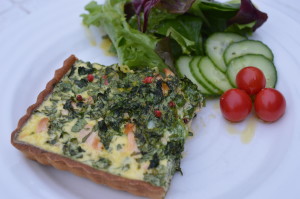 Salmon and Watercress Quiche with Pink Peppercorns – Serves 6
Salmon and Watercress Quiche with Pink Peppercorns – Serves 6
(From a lovely recipe book by Camilla Stephens ‘The Higgidy Cookbook’.)
For the Savoury Shortcrust Pastry:
- 200g/7oz plain flour
- A generous pinch of salt
- 100g/3½oz unsalted butter
- 30g/1oz Parmesan Cheese, grated
- 1 medium egg yolk, beaten
- About 3 tablespoons of ice-cold water
For the filling:
- 3 salmon fillets (approximately 350g)
- Tablespoon of lemon juice
- Knob of unsalted butter
- 1 medium onion, finely sliced
- 200g/7½oz new potatoes, par-boiled and cut into 1.5/1″ chunks
- 50g watercress (leaves picked off and the thick stalks thrown away), finely chopped
- 2 tablespoons of fresh dill, finely chopped
- 3 medium eggs, beaten
- 300ml double cream
- ½ teaspoon of pink peppercorns, lightly crushed
- Salt and freshly ground black pepper
Sift the flour and salt together. Add the butter cubes and ‘rub together’ until the mixture resembles breadcrumbs. Add the finely grated parmesan cheese.
Sprinkle over the beaten egg yolk and water. With a blunt knife, mix together until the pastry begins to come together. Use your hands to gather the final bits and then knead lightly on your work surface to ensure your pastry is smooth. Flatten to a disc, wrap in cling film and pop into the fridge to chill.
Pre-heat the oven to 200ºC/Gas Mark 5/400ºF and put in a baking sheet to heat up.
Melt a knob of butter in a frying pan over a medium heat and soften the finely sliced onion. After about 8 minutes, transfer the onion to a bowl to cool.
Par-boil the new potatoes until soft to the point of a knife but with a little resistance. Cut into 1.5cm/1″ chunks and transfer to a bowl to cool.
Place the salmon fillets onto a large sheet of foil placed on a baking tray. Sprinkle over the lemon juice and season with salt and freshly ground black pepper. Pull the sides up and scrunch the joins together to make a neat parcel. Place in the oven and bake for 12 minutes. Once cooked, unwrap and put to one side to cool.
Finely chop the watercress and dill.
Prepare a loose-bottomed rectangular flan tin, 30cm x 20cm, by brushing with melted butter.
Once the pastry has chilled, roll to a 3mm thickness and transfer to the tart tin. Pass a rolling pin across the top of the tin to remove the excess pastry and push the pastry against the sides to give a neat finish. Let the pastry stand a little proud of the rim. Prink the base with a fork and return to the fridge for a second 30 minutes.
Once chilled, remove the uncooked pastry case from the fridge. Scrunch up a sheet of baking parchment and line the flan tin, filling with baking beans. Place on the hot baking tray in the oven and bake for 20 minutes.
Take the flan out and remove the paper and baking beans. Return the flan to the oven for a final 5 minutes. Leave to cool.
Reduce the oven temperature to 180ºC/Gas Mark 4/350ºF.
When you are ready to bake, scatter the cooled and cooked onions evenly over the base. Follow that with the potatoes. Then, thickly flake the salmon and discard the skin. Evenly scatter the salmon over the potatoes. Next the chopped watercress and dill, leaving a little to sprinkle on the top.
Whisk together the cream and the eggs. Season with salt and pour into the pastry case. Sprinkle over the remaining watercress and dill. Finally, scatter with pink peppercorns.
Place on the hot baking sheet and bake for 30 minutes until the filling has just set and the top is turning golden.
(Aga: There is no need to blind bake your pastry case. After the second chill, arrange the cooled filling and cook on the floor of the roasting oven. Check after 20 minutes. If the top is browning too quickly and the pastry isn’t cooked, slide a cold baking sheet above it to provide a heat shield.)
Remove from the tin. Eat.
